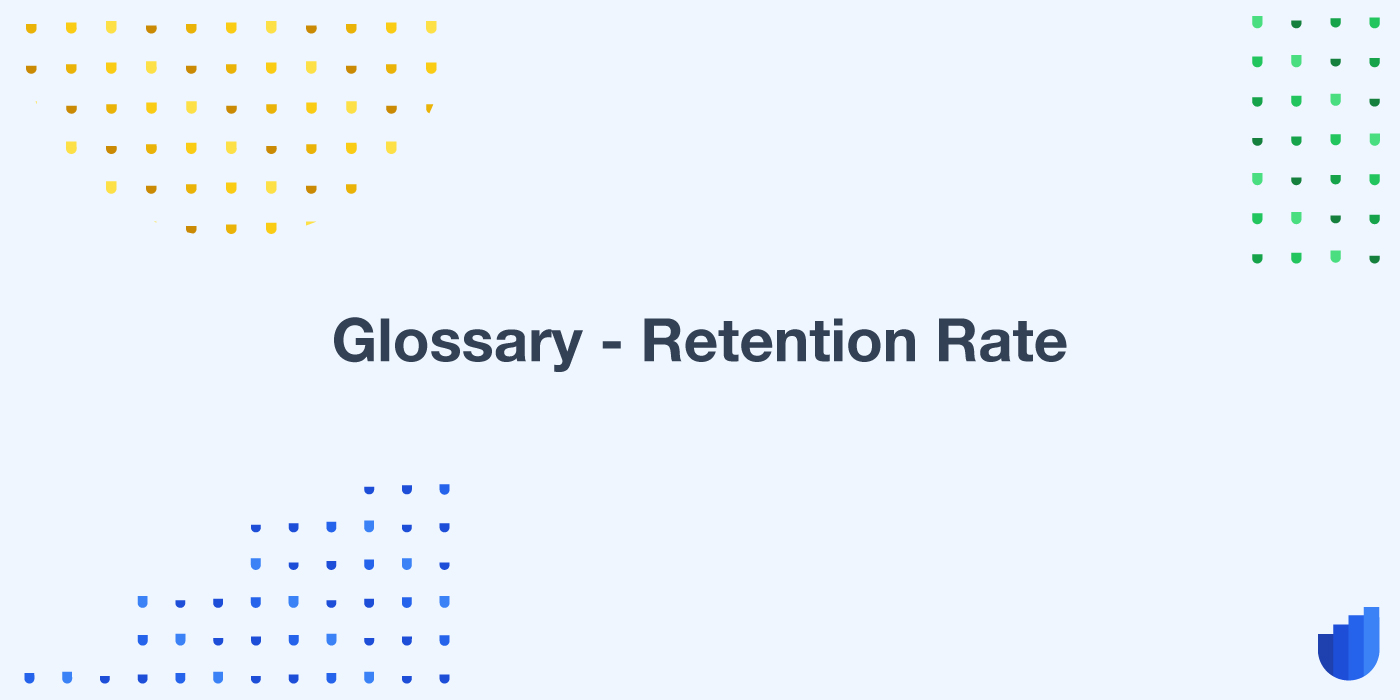Retention Rate
Retention rate is a performance metric that indicates what proportion of your customers come back to do repeat business with you.

Businesses have a variety of performance indicators to track in order to measure success. You can’t realistically keep tabs on all of them at once, so typically you select the ones that are most relevant to your growth goals. However, one oft-neglected metric, retention rate, is far more important than many companies give credit.
Knowing your retention rate and having a customer retention strategy can provide you with a unique advantage in your niche.
It might not be immediately intuitive, at first glance, to focus on keeping existing customers over converting new ones. But in this article, we’ll illustrate what a retention rate is, how to calculate it, and the value which having a high customer retention rate can bring to your business.
Table of contents
What is Retention Rate?
The rate refers to the proportion of customers who keep doing business with you compared to your total number of customers, over a given time frame. It’s essentially the reverse of churn rate, which denotes the percentage of customers who stop doing business with you over a certain time period.
Retention rate means different things for various business models. For example, customers who maintain their SaaS subscriptions contribute to a high rate, meaning that your retention rate directly corresponds to how capable you are of sustaining long-term clients.
However, for companies whose business mostly consists of large, one-off product purchases,this may not be as important, because their customers don’t typically buy again and again on a regular basis.
Why is it Important to Improve Retention Rate?
Improving your retention rate has many benefits that are backed up by plenty of research. Here are some of the most important ones.
1. It Can Greatly Improve Your Profits
A very frequently cited study by Bain & Company states that improving customer retention by as little as 5% can improve your business’s profits by anywhere between 25 and 95%. This by itself should be a revelatory statistic for any company that doesn’t yet have a solid customer retention strategy in place.
In addition, retained and loyal customers are actually more likely to spend more on each transaction and purchase more of your products. They know that your business provides value, and they’ll keep coming back for more.
2. It Can Save You a Lot of Money
The benefits of strong customer retention rates don’t stop with boosting profits. Studies show that it can be five times more expensive to acquire a new customer than to invest in retaining an existing customer.
On top of that, the probability of selling to a new customer is only 5-20%, while you have a 60-70% chance of conversion when marketing to existing customers. Simply put, loyal customers spend more, cost less to maintain, and are easier to convince to keep buying from you.
3. Retained Customers are Free, Effective Marketing
Retained customers come back because they’re happy with your service. Happy customers are much more likely to promote your business among family, friends, and their close network of contacts.
This isn’t just a free way to get some promotion – 92% of people trust word-of-mouth recommendations over any other kind of marketing.
How Do You Calculate Retention Rate?
There aren’t necessarily any industry-standard formulas associated with calculating retention rate. However, there is a basic formula that can help you gain insight into how you’re doing with customer loyalty.
Retention Rate Formula
The formula has four components:
- A time period over which to measure retention
- The number of customers your company had at the start of the time period (Cs)
- Number of customers you had at the end of the period (Ce)
- Number of customers you acquired during the period (Ca)
The formula is expressed as such:

You can also express this formula in the following steps:
- Take the total number of customers that you had at the end of your time period, and subtract the number of acquired customers from it.
- Divide the result by the number of customers you started with.
- Multiply the total figure by 100.
Example
Consider a company that had 1000 customers at the start of a given month. (Cs = 1000)
Throughout the whole month, the business was able to acquire 200 new customers. (Ca = 200)
At the end of the month, the business had 960 customers. (Ce = 960)
Retention Rate = [(960-200)/1000)]*100
Retention Rate = 76%
What is a Good Retention Rate?
Ideal retention rates vary across different industries. For SaaS startups, a good figure to aim for is a 5% annual churn rate or a 95% annual retention rate.
Keep in mind that again, this is annual, not monthly! A monthly churn rate of 5% would quickly compound to a 46% annual churn rate.
Retained Customers are Happy Customers
It’s clear that this metric provides a huge amount of value for companies, and you should make it a point to develop a solid retention strategy (if you haven’t already). Such a strategy would basically involve creating more value and incentives for your customers, with measures like:
- Implementing a loyalty program
- Providing good customer service
- Engaging with customers and making them feel as though their feedback is listened to
- Creating a trust-driven, transparent relationship with clients and giving them information about their investment with you
- Treating clients like people and building personal, amicable relationships with them
At the end of the day, you should strive for your customers to be happy with your service. The rest will follow from there.
